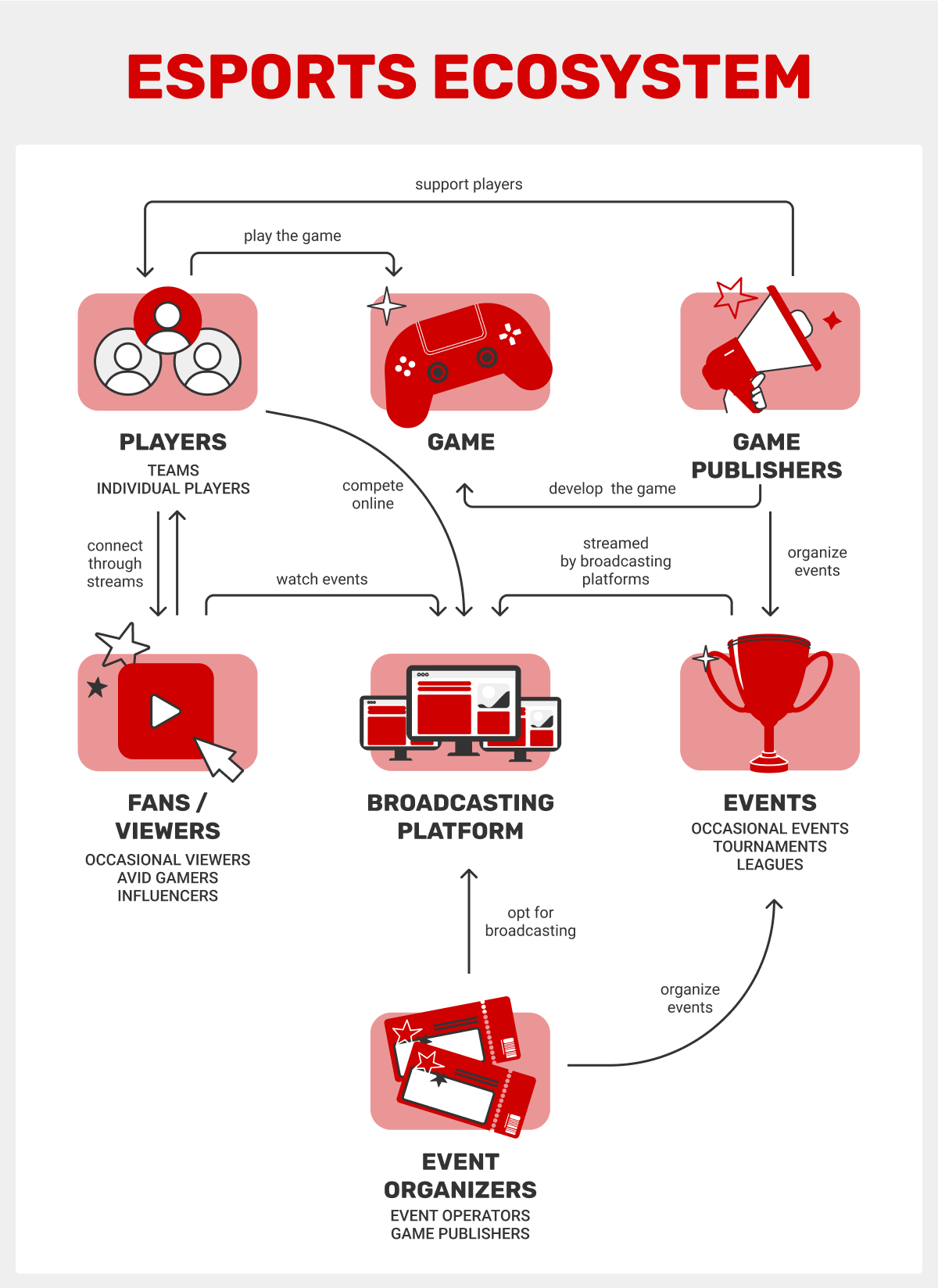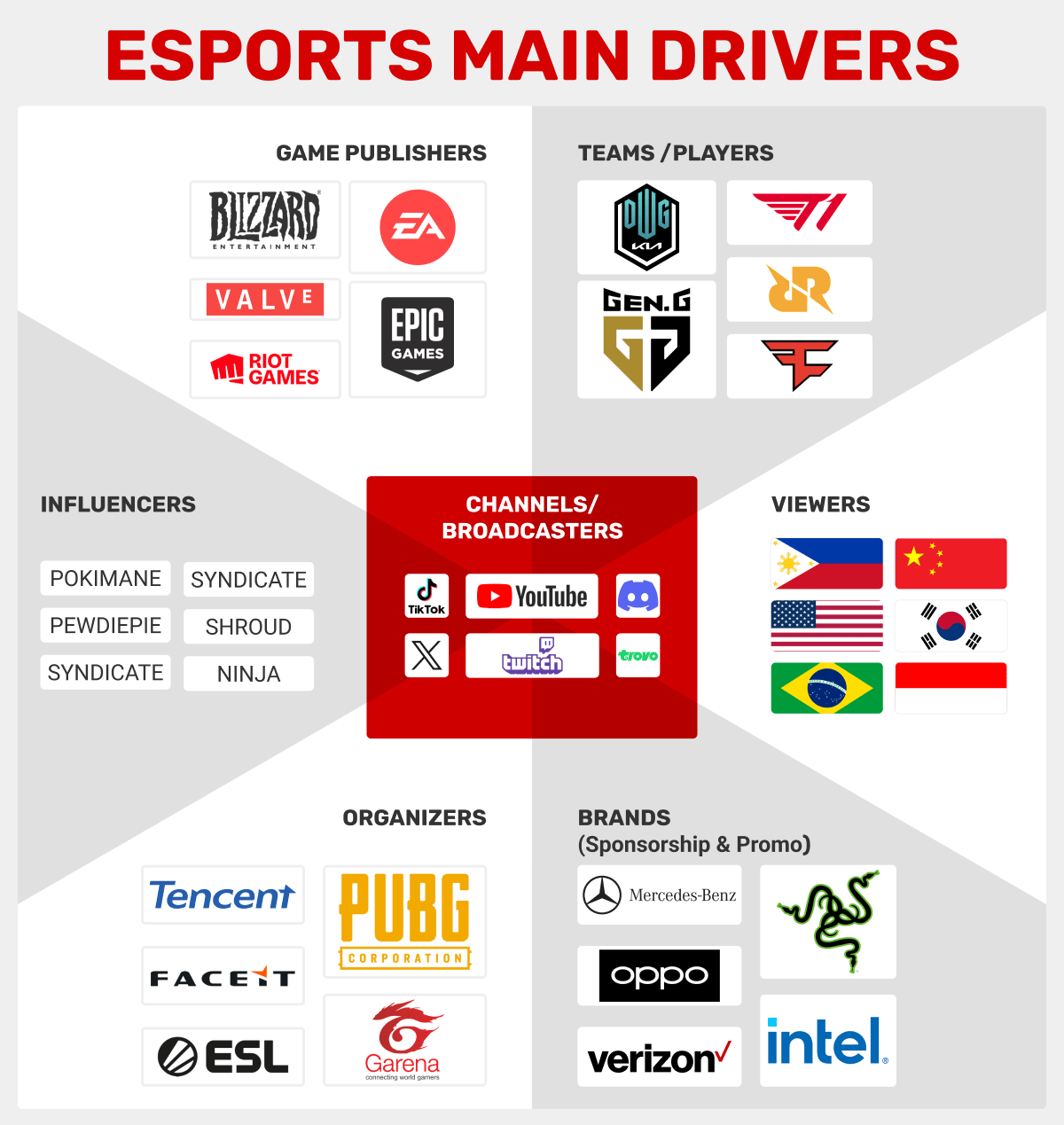A recent surge of eSports has drawn the attention of every second affiliate. Is there anything promising in this realm? This guide by Adsterra’s Head of CPM, Mikhail Zhukov, will cover the basics of the eSports vs Sports topic, featuring the main prospects for affiliate marketers.
Which advertising hacks to try for digital events and which to avoid? Are eSports your next profit source, or it’s more of a hype, not of the affiliate business? Will traditional sporting activities still be profitable? We’re here with the answers.
While cyber sports are gaining pace, affiliates and agencies still continue growing ROIs from their iGaming campaigns with Adsterra. Add exclusive traffic sources to your marketing strategy!
Esports vs sports: expert opinions
Mikhail participated in the panel discussion eSports vs Sports: A Comparative Analysis of Fan Engagement Strategies at SIGMA Balkans.
All panelists:
- Oliver de Bono – CEO, Quantum Gaming
- Robert Dowling — Director of Product, EBET
- Vladan Blagojevic – Business Development Manager, Oddin.gg
- Mikhail Zhukov – Head of CPM Department, Adsterra
Panelists delved into the peculiarities of professional gaming, highlighting how it differs demographically and behaviorally. Experts have agreed this market is shaking up the traditional fan engagement patterns, laying out practical tips for affiliates to get user traction. You can watch the entire video right now or/and read the extended guide provided by the Adsterra expert below.
But let’s be consistent and start with vital definitions.
What are eSports?
Esports embrace video gaming competitions between individuals or teams where professional or amateur players show their best skills to a vast audience of online spectators, primarily gamers.

Esports stats
- It is forecasted that the global audience of eSports will hit 640 million viewers by 2025 (as of Statista).
- There are over 38,000 professional gaming teams worldwide, which opens new prospects for advertising. However, the pros claim not all of these teams are active.
- The top 3 profitable e-teams have earned over $3M each, starting from 2016. The leading one is OG (Dota 2), whose earnings account for $36.9M.
- As of 2022, the global esports market is valued at $1.38 billion. This figure is expected to increase to 1.87 billion US dollars by 2025.
- Experts name North America and Asia the largest markets for this niche, where China has already taken about one-fifth of the total volumes.
- Some 45% of esports viewers are aged between 18–24. Another survey (with 9,000 respondents) claims that a typical esports fan is in their late twenties, with 30% earning over $100,000 annually.
The stats given speak for themselves: professional gaming is here to stay with its surging popularity, active and prosperous audience, and the highest spending potential.
Main actors in eSports: players, publishers, brands, streaming
To understand professional gaming, we’ll now take a closer look at how it connects its main actors. Affiliates need to embrace this ecosystem to be aware of where their main profits can come from. Ok, basically, eSports include:
- Individual players or teams
- Competition organizers
- Channels or platforms that broadcast competitions
- Brands that advertise during competitions
- Game developers or publishers (don’t get confused, as the term “publishers” has a different meaning on ad networks like Adsterra)
- Fans / watchers / spectators / the audience
Additionally, we can place influencers who are gaming experts and trendsetters.

Affiliates may profit from promoting brands’ offers during the main competitions or by promoting one of the esports game developers. It’s time to jump to the main differences between esports vs traditional sports.
Esports in affiliate marketing
Though professional gaming is changing the established sports landscape, we can’t say it’s a competitor or alternative to traditional sports, especially regarding affiliate marketing.
Background
Sports is a long-standing industry with battle-tested conversion flows and a well-oiled promotion machine. Lots of tutorials have been published about Sports and traditional Gaming, and you can minimize mistakes while starting out on a new ad platform. With Esports, affiliates are more like pathfinders. The more you’re involved in cyber sporting activities, the more you have opportunities to build a strong promotion strategy.
Channels
Promotion channels are also well-known in traditional sports. You can buy traffic, say, from an ad network and send it to an iGaming platform’s signup page, getting paid when newcomers register and top up. The Esports vertical is more complex: you need to narrow your targets to precisely those audiences interested in one particular game. So, in-game promotion becomes one of the best ways here.
Audiences
Having grabbed a classic iGaming offer, we know the buyer persona, we know which event will definitely not leave them indifferent, and we’ve got tons of stats and analytics to support or cast back our hypothesis. Esports unlocks totally different audiences in terms of age, behavior, and engagement patterns. Many of your potential customers will be under twenty years old. Therefore, you’ll need a non-classic approach to communicate an ad message.
And let’s discuss now how to approach these new target users.
How to advertise eSports offers
Since the engagement patterns alter in eSports compared to traditional sports, affiliates should resort to different techniques of promoting offers. It doesn’t mean the whole advertising concept will differ, but the specifics matter a lot.
1. Bonuses are not the total package
With classic sports promo, your winning strategy will usually include appealing to the team spirit of a group of fans, hooking with a possible gain, and offering a welcome bonus. eSports will require some new tricks.
Fans are more like consumers rather than reckless gamers ready to bet right now. It doesn’t mean the eSports community is a passive watcher. But to grab their attention, you must create a two-way connection, offering engaging experiences right in your ad. It could be gamified content, some behind-the-scenes videos or, maybe, exclusive merch.
2. Fan loyalty differs
There is no long-standing tradition of supporting eSports teams, and fan loyalty is lower than classic sports. eSpectators love watching their favorite athletes playing, and their admiration expands to a player’s personality, not only skills.
The gameplay mechanics in eSports mean the world, and people mostly get engaged with one particular set of rules and the philosophy of a game.
3. Tunneled engagement
In traditional sports, people often have cross interests. One can watch soccer with curiosity and check the score of the national hockey team at the same time. In eSports, it’s instead a rarity: FIFA fans are not usually getting involved with DOTA 2.
As audiences engage with one game, they may be more interested in getting in-game bonuses or even payouts. That’s the case when virtual money is more alluring than some bucks on your account.
4. Lots of new words and meanings
To advertise, you must speak the language of your audience. But since eSports opens up a whole new market, affiliates are facing lots of unknown words, meanings, and rules.
If you’re not a gamer, it’ll be challenging to absorb this plethora of meanings. But instead of googling “esports vocabulary,” it’s better to become a part of this fantastic multiverse and learn the lingo on the go.
5. Audience volumes and ages
Still, audiences are less massive in eSposts compared to traditional tournaments. Moreover, many viewers are under 20 years old and don’t have a steady income.
The number of those interested in cyber tournaments soared literally during the COVID lockdowns, and since then, the number of viewers has not experienced such impressive surges, growing 5-10% per year.
All that means that affiliates have time to learn more about the vertical, as it won’t spark in the next 12 months.
6. Internet speed matters
Live streaming is very demanding at broadband speeds. That’s one of the reasons eSports have not embraced the whole world, but not the main one. Currently, we can see a surge of traffic from the UK, Canada, New Zealand, and Australia, while the US and Asia are still leading the game.
7. The fast-paced market
Sports are about emotions and team spirit. As of now, we’re only witnessing the communities of eSports fans getting stronger. Legends are being born right now, and new dramas and sensations are around the corner. What does it all mean? You must be a great trendwatcher to track new e-teams and players and not get confused about how to address your customers.
8. Communication differs
Set up targeting, choose a bid, buy traffic, count conversions, and get paid. That’s what you will typically do while running a classic iGaming campaign. With eSports, it still needs to be determined which traffic source will be a perfect match.
Official platforms like YouTube and Twitch, along with broadcasters’ websites, have loads of restrictions. Our recommendation is to opt for influencer marketing. Influencers — journalists, coaches, players, local celebrities — can form a strong bond with your brand and the eSports community.
9. In-game promo VS classic ads
When advertising, say, a football match, affiliates will appeal to the classic FOMO (fear of missing out) effect and offer bonuses or prizes for those who deposit. Their tactics will involve evoking team spirit and enhancing engagement using local slang and fan chants. With eSports, this is slightly off. What rocks here is an in-game promo. And what’s more, in-game money (but we mentioned this a bit earlier).
Looks like it’s time to wrap up our guide to traditional sports vs eSports. Hopefully, it has fueled your thoughts and provided some less-known truths.
To finish up
Esports is an up-and-coming market driven by technologies and growing audiences. Still, it’s rather a small part of the affiliate marketing domain, but all forecasts claim as one: The niche will develop at a fast pace in the next five years.
Today, trying to successfully communicate a message to the Esports audience through sports channels will not work as well as in-game techniques. However, affiliates will soon find more opportunities to thrive with these offers.
Esports vs sports FAQs
Esports affiliates promote esports-related products and services using various channels. Affiliates earn from advertising esports offers, primarily through their YouTube and Twitch channels or by acquiring relevant traffic from esports-related sources.
Although traditional sports like football and cricket have a massive global following, the eSports vertical has experienced an immense rise in popularity, mainly embracing younger audiences. However, traditional sports can still boast of having the most numerous and loyal fan community.
Traditional sports often accentuate physical mastery and gaming tactics. Meanwhile, eSports involve digital skills like strategy, decision-making, and hand-eye coordination. The platforms for both also differ: traditional sports occur in physical venues with fixed scheduling, while eSports take place online, and the schedule is flexible.
The traditional industry mainly earns through broadcasting rights, and selling tickets and merchandise. eSports often rely on online streaming, sponsorships, and in-game purchases.
